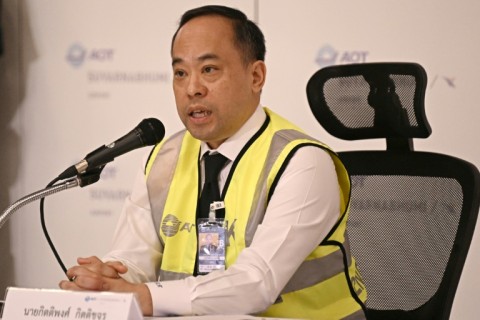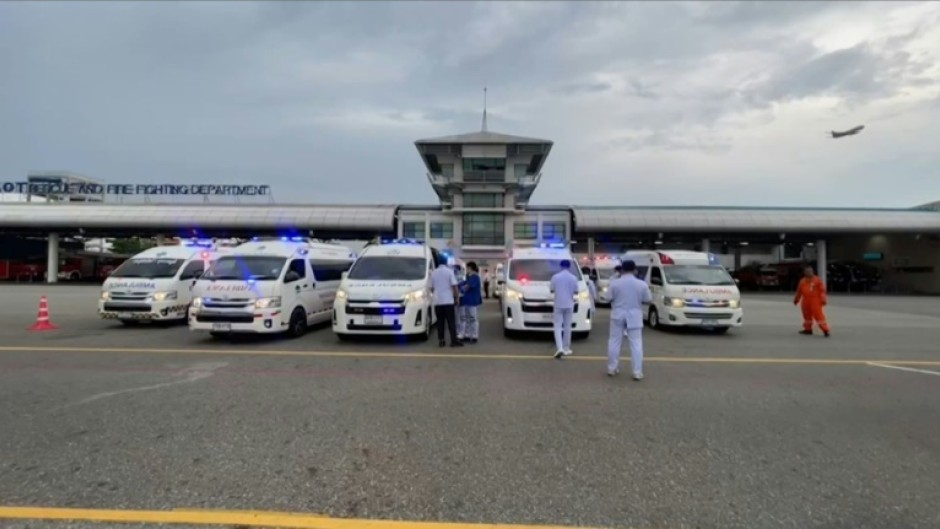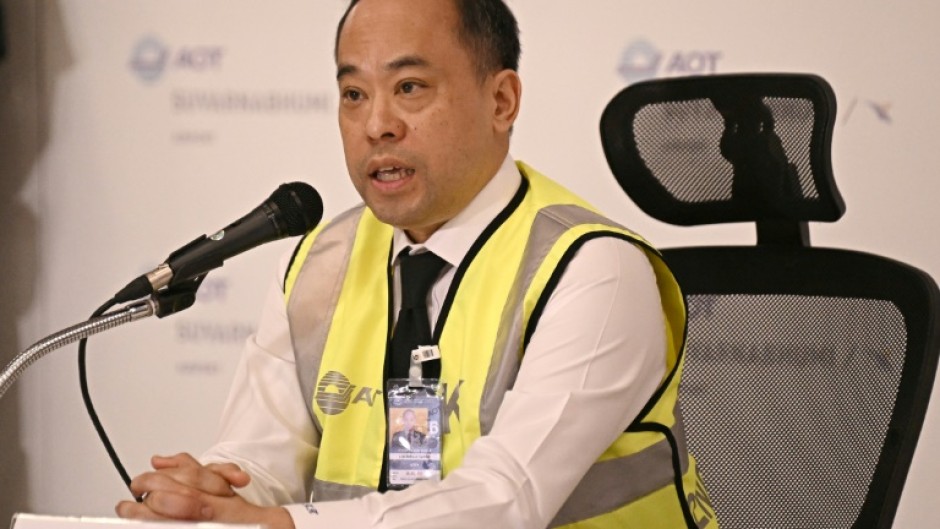A 73-year-old British man died and more than 70 people were injured Tuesday in what passengers described as a terrifying scene aboard a Singapore Airlines flight that hit severe turbulence and made an emergency landing in Bangkok.
The turbulence came as parts of Thailand were buffeted by thunderstorms during the country's annual rainy season, with flight tracking data suggesting the plane dropped more than 1,800 metres in just five minutes.
Andrew Davies, a British passenger aboard the Boeing 777 travelling from London to Singapore, told BBC Radio 5 that the plane "suddenly dropped" and there was "very little warning".
"During the few seconds of the plane dropping, there was an awful screaming and what sounded like a thud," he said, adding that he helped a woman who was "screaming in agony" with a "gash on her head".
He described seeing people with head lacerations and bleeding ears: "I was covered in coffee. It was incredibly severe turbulence".
Most of the injured passengers on the flight suffered blows to the head, said the director of Bangkok's Suvarnabhumi Airport, Kittipong Kittikachorn, who confirmed the age and nationality of the deceased man.
Emergency vehicles raced onto the tarmac at the Thai capital's main airport with lights flashing and sirens blaring after the plane touched down at 3:45 pm.
"At 3:35 pm the airport received a distress call from the Singapore Airlines flight saying there were passengers on board injured by turbulence, and requesting an emergency landing," Suvarnabhumi Airport said in a statement.
"The plane landed at the airport and the medical team was sent to treat all the injured."
Flight SQ321 had taken off from London's Heathrow airport and "encountered sudden extreme turbulence" at 11,300 metres over Myanmar's Irrawaddy Basin, according to Singapore Airlines.
It confirmed in a statement that there were "injuries and one fatality" and said there had been a total of 211 passengers and 18 crew on board.
- Passengers 'too casual' -

Bangkok's Samitivej Srinakarin Hospital said a total of 71 people had been sent for treatment, six of them severely injured.
"We deeply apologise for the traumatic experience that our passengers and crew members suffered on this flight. We are providing all necessary assistance during this difficult time," Singapore Airlines said.
Of the passengers, 56 were Australians, 47 British and 41 Singaporeans, the airline said.
"In terms of exactly what happened, it's too early to tell. But I think passengers are too casual on board commercial aircraft," US-based aerospace safety expert Anthony Brickhouse told AFP.
"The moment the captain turns off the seatbelt sign, people literally unbuckle."
Allison Barker told the BBC her son Josh who was aboard the plane texted her that he was on "a crazy flight" that was making an emergency landing.
"It was terrifying," she said. "I didn't know what was going on. We didn't know whether he'd survived, it was so nerve-wracking. It was the longest two hours of my life."
- Singapore to send investigators -
Singapore's transport ministry said it would send investigators to Bangkok, while the city-state's President Tharman Shanmugaratnam said "we must hope and pray" for the injured to recover.
The episode marks the latest drama involving a Boeing plane, after a fuselage panel blew out of an Alaska Airlines 737 MAX in January as well as two fatal crashes in 2018 and 2019.
Boeing said it was "ready to support" Singapore Airlines.
"We extend our deepest condolences to the family who lost a loved one, and our thoughts are with the passengers and crew," Boeing said on social media platform X.
The US aviation giant has been rocked by a series of problems in recent years.
In March, it announced the departure of CEO Dave Calhoun as it faces intense scrutiny on safety and manufacturing standards.
The company has a late May deadline to present a plan required by the US Federal Aviation Administration, which has capped MAX production until the company shows progress on safety and quality control.
Scientists have long warned that climate change is likely to increase so-called clear air turbulence, which is invisible to radar.
A 2023 study found the annual duration of clear air turbulence increased 17 percent from 1979 to 2020, with the most severe cases increasing over 50 percent.
By Montira Rungjirajittranon And Thanaporn Promyamyai


